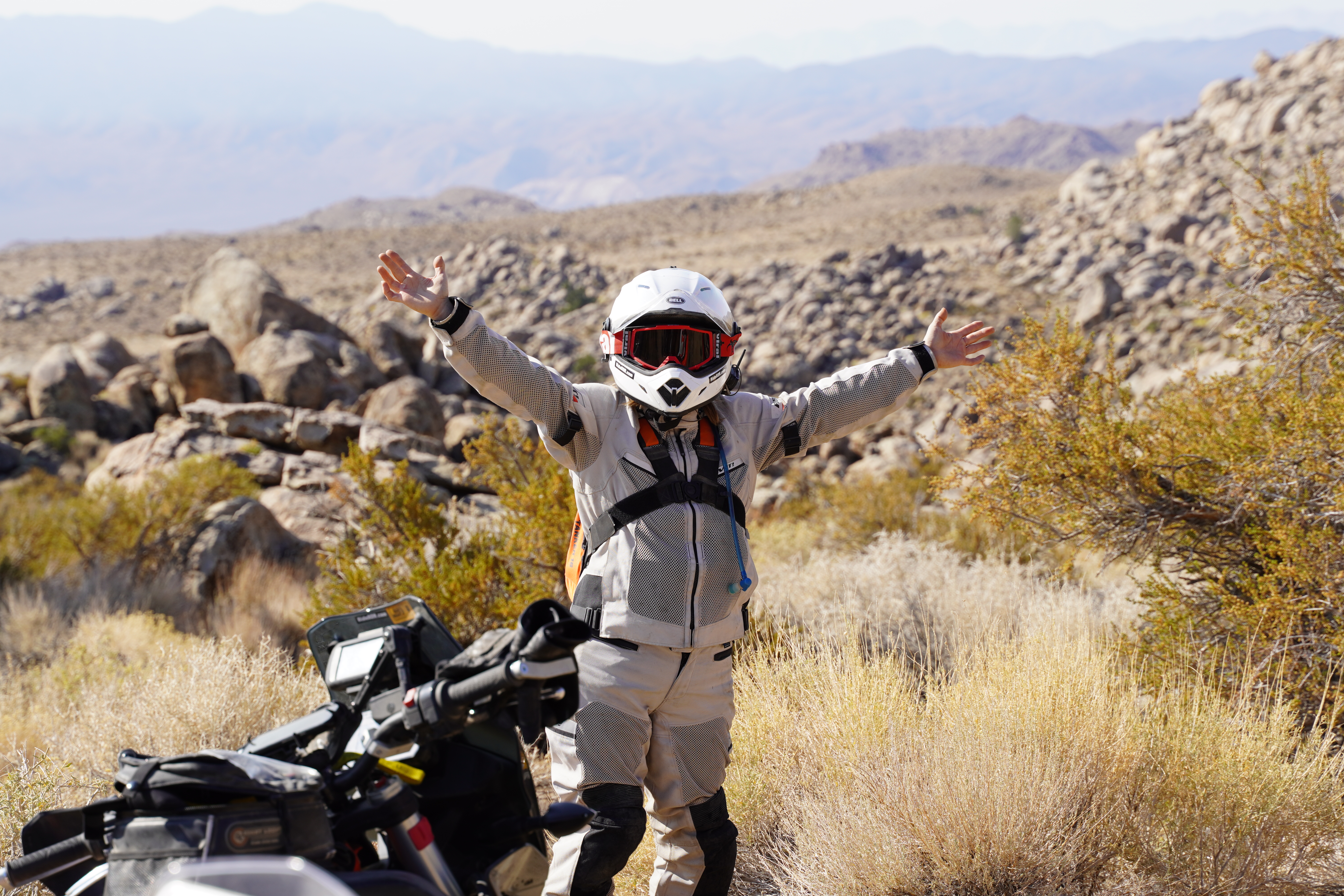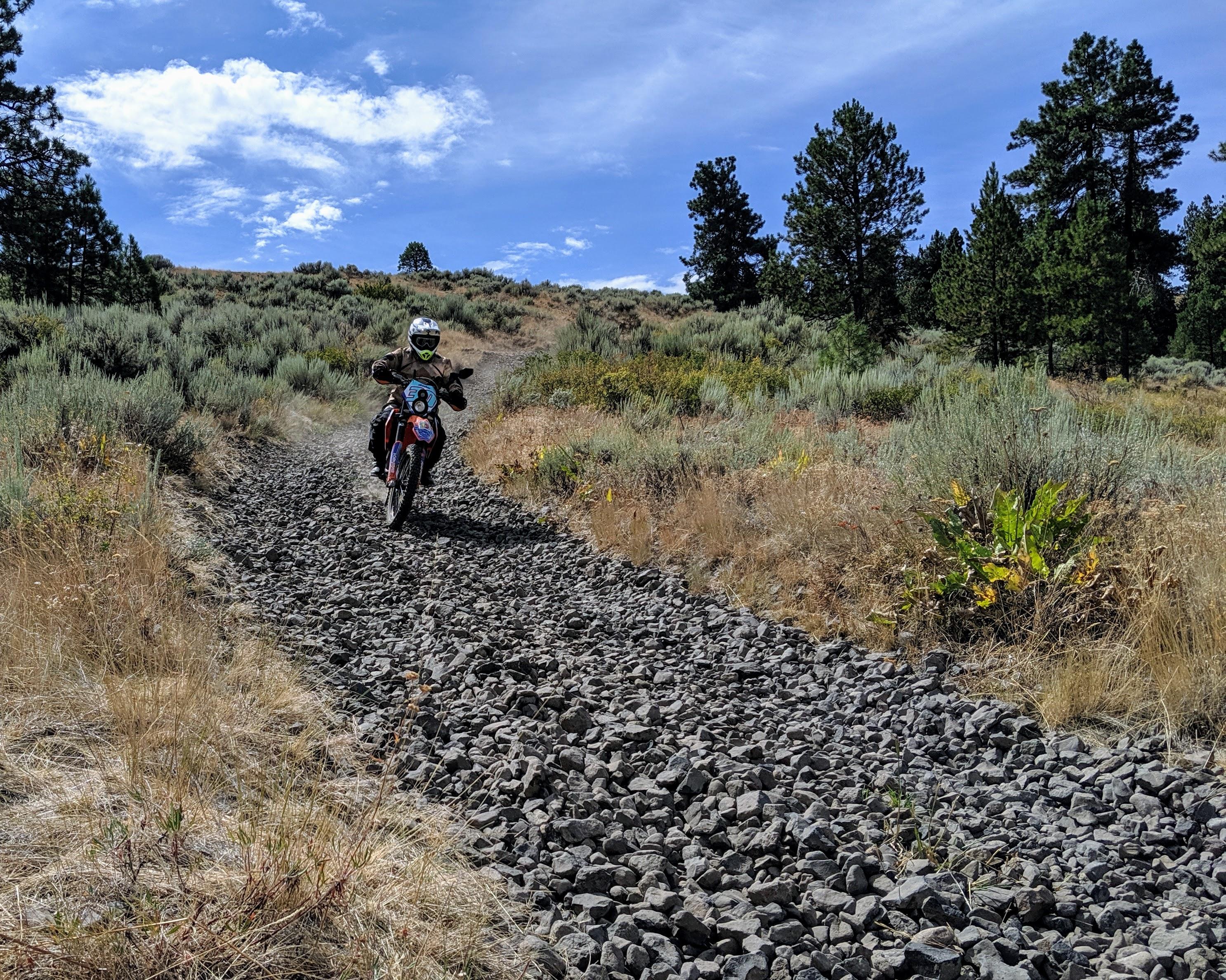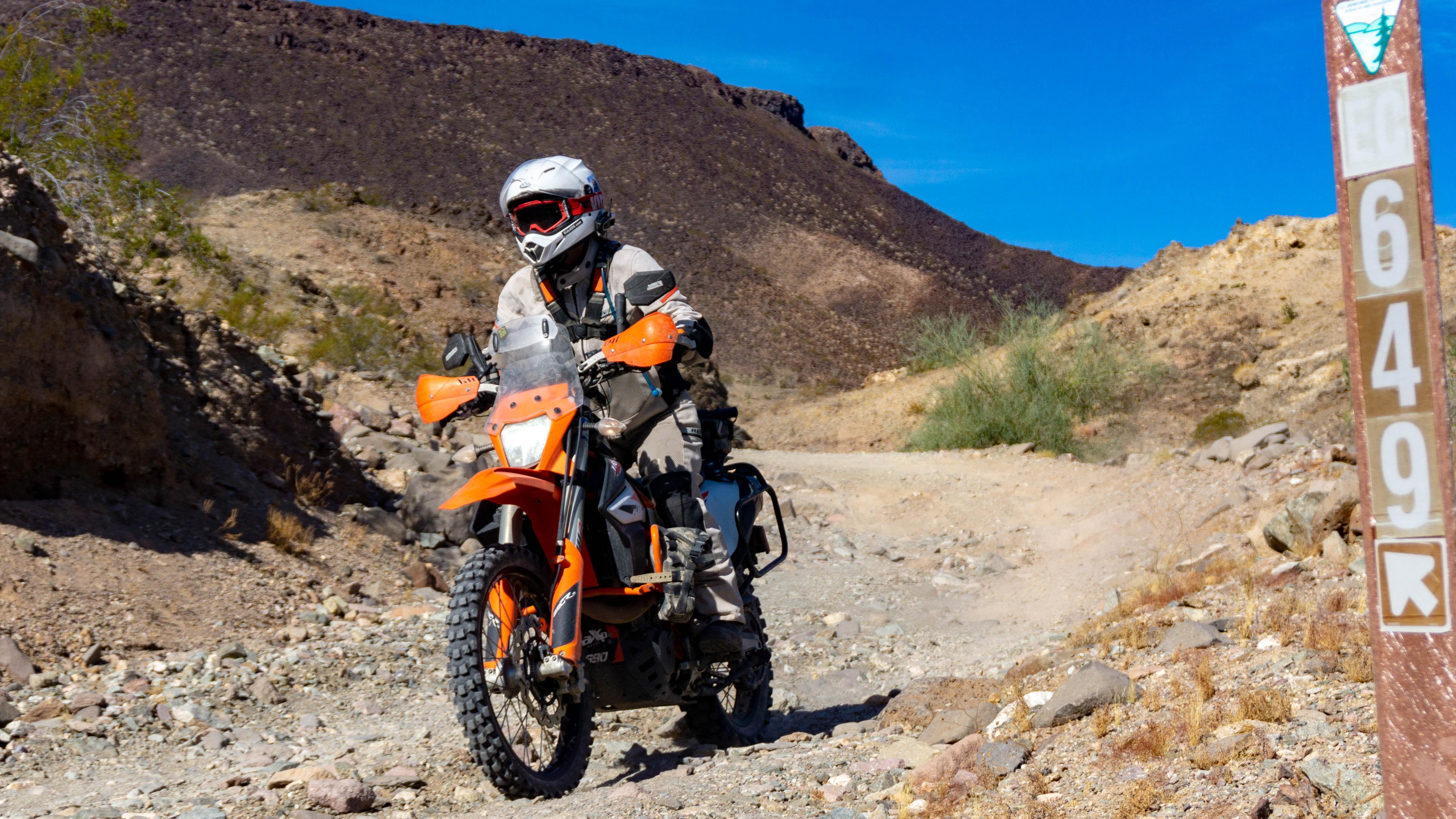
Heart pounding, you crest the hill. A moment of jubilation, and then you realize that the way down is steeper, rockier, and even more exposed than what you just rode! Your heart races, for a different reason… Fear starts to take hold…
Is this a familiar experience? In this article, we will explore a four step process for effectively managing fear.
Acknowledge your fear
It can be tempting to try to squish fear into a little ball, and pretend it doesn’t exist. The problem with that approach is that our body is responding to the fear and denial will simply serve to increase it. So, let’s try another approach: “Name it to tame it.” Take the time to be specific, saying “I’m afraid of steep rocky downhills, especially with significant exposure.” Those moments are the ones to remember so that you can effectively tackle the situations you fear.

Why not simply “fake it to make it?” Our prefrontal cortex manages our rational responses, and if fear was rational, we could think our way through it. Fear exists in the amygdala, the oldest part of our brain, and is hard wired into our body to protect us from danger. Our prefrontal cortex alone cannot override a fear response. Developing our emotional literacy will help us on the motorcycle, and in life.
Develop Skills to Manage the Physical Response of Fear
Did you know that when you breathe in, your heart rate speeds up and when you breathe out it slows down? It is the gap between your in-breath heart rate and your out-breath heart rate that tells your brain whether you are being chased by a lion or sitting around a campfire.
Breathing
If you practice breathing at an even six breaths per minute, you develop sympathetic tone, giving yourself balance between the sympathetic and parasympathetic nervous system, also known as the fight/flight system and the rest and digest system. This “tone” is like building a muscle and will allow you to utilize your breath to engage manage your stress response, even in stressful situations. We cannot learn to calm our breathing in stressful moments; we must practice during calm times so we can use breathing as a skill when we need it. There are many different breathing techniques that you can learn and practice. I recommend finding one that feels effective for you, and practicing three times a day for 2-3 minutes a session to develop this skill.
Mindfulness
You may have heard of mindfulness; my definition of mindfulness is being in the present moment with non-judgmental awareness. Think about the above situation; the moment is not necessarily what you are afraid of; after all, cresting a hill often provides a splendid view. However, our brains like to supply us with all of our potential catastrophic futures, so instead of being in the sublime moment, you are living in a disastrous future. Practicing mindfulness can help us bring our awareness back to the present rather than borrowing trouble from an uncertain future. The non-judgemental aspect of this awareness is also important. Negative self-talk can emerge in fearful situations. This can keep us
Body Scan
Tune in to your body and learn to recognize muscle tension. Tense muscles make the bike more responsive to input, often resulting in increased fear. A Body Scan Meditation can help you learn to recognize tense muscles in your body. After practicing deep body scans, you can start to practice a 30 second body scan, simply checking in with parts of your body where you know you carry tension when you are stressed. After checking in, if you discover you are tense, you can use breath or movement to relax tense muscles. Have some simple reminders about the way you want your body to feel after the check-in. When we did the CABDR, I was pretty stressed about the sand. I would say over and over in my helmet “baby birds baby birds”. I wanted to remind myself to have soft hands on the handlebars; after all, if I was holding a baby bird, I wouldn’t want to crush it, and relaxing my muscles on the handlebars actually gave me more control over the bike.

Thought Stopping
Thought stopping and thought replacement can be effective at shifting our attention in the moment. If you find that once fear takes hold, a series of repetitive thoughts won’t let go and keeps your body in a state of fight/flight, this technique can help you stop the cycle and apply the above skills. This takes a little preparation; before a stressful moment, think of a place that helps you feel calm. Picture it in your mind – the sights, the smells, the sounds, all of it. When you are in a stressful moment and thoughts of danger and death are spiraling your emotions out of control, say out loud “STOP!”, perhaps even adding a hand motion to make it firm. Then, pull up this well-rehearsed picture of a peaceful place. This can effectively distract you from catastrophizing, and help you bring your body back into balance.

These skills are the foundation for managing the physiological response to fear.
Practice these fear reducing skills in lower risk situations
Steep rocky uphills have been my archnemesis in off-road riding. I spent some time reflecting on what my thoughts were related to this fear. The rocks often made me feel out of control, and I feared crashing. Increasing throttle had been a proposed solution, and I realized that increasing throttle increased my fear of certain death should the rocks send me out of control. I realized I needed to tackle this fear off of the bike. In my morning meditation, I would visualize the hill that gave me the most trouble: Baby Head Hill on the WABDR. I would practice my breathing as I could feel my heart rate respond when I was just thinking about that darned hill. And my body would respond; I’d get calmer, and over time, I could visualize myself successfully summiting the hill.
Personally, one of my favorite fitness routines is running. I found a hill on my run, and would then picture that I was riding up Baby Head Hill while running up this hill. Physiologically, this increased my heart rate and mimicked the anxiety I felt with Baby Head Hill. I practiced lifting my eyes and looking at the top of the hill, instead of looking at my feet while I ran. I practiced staying in the moment and naming the physical response: “My heart rate is up, but I can do this.” This became a daily practice on my morning run, and the next time I tried to ride my motorcycle up a long rocky uphill, success was mine!

Generalize and Practice
Practice these skills on the bike, even before you find yourself in a fear-inducing situation. You can also practice your technical off-road riding skills for challenging obstacles, even on the easy parts of your ride. Standing, for example, is often only necessary when tackling obstacles, but practicing it on easier terrain helps it feel more natural in the technical sections. Even when you are not feeling fear, you can also practice your breathing.
Do these skills only apply to riding motorcycles? Absolutely not! Perhaps you are about to give a big presentation at work, or have a meeting coming up with your boss. Perhaps a challenging family visit is around the corner. Or perhaps, you have spent the last year dealing with a global pandemic, and everything is different and out of sorts. This same process applies: Acknowledge the feeling, develop skills, practice skills in lower risk situations, and then generalize.

Enjoy this? Check out Motorcyclists vs. Coronavirus: Adrenaline Spiced Meditation

3 comments
Brilliant! Great advice! Thank you, Kris!
What a great article Kris! I’m going to work on the breathing.
This is golden.